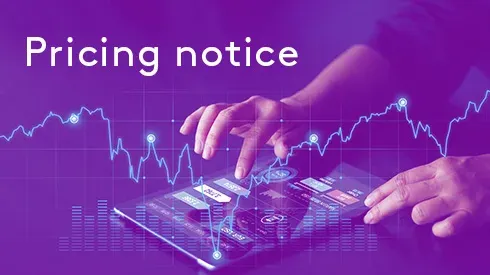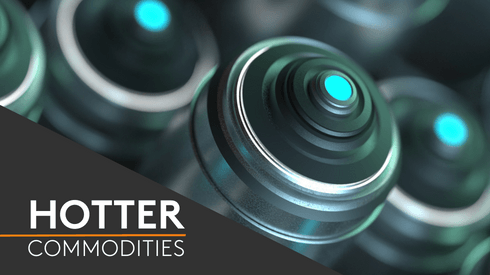Importantly, the proposed Act now formally defines the new category of “strategic.”
It states the list of strategic raw materials “should contain raw materials that are of high strategic importance, taking into account their use in strategic technologies underpinning the green and digital transitions or for defence or space applications, that are characterised by a potentially significant gap between global supply.”
The strategic list includes bismuth, boron (metallurgy grade), cobalt, copper, gallium, germanium, lithium (battery grade), magnesium metal, manganese (battery grade), natural graphite (battery grade), nickel (battery grade), platinum group metals, rare earth elements for magnets, silicon metal, titanium metal and tungsten.
Critical raw materials are defined as those which are of high importance for the overall EU economy and also subject to a high level of supply risk.
All of the strategic raw materials are also included on the updated critical list, which also covers antimony, arsenic, bauxite, barite, beryllium, coking coal, feldspar, fluorspar, gallium, germanium, hafnium, helium, heavy rare earth elements, light rare earth elements, niobium, phosphate rock, phosphorus, scandium, strontium, tantalum and vanadium.
There are also some additions to the list of critical raw materials compared with its previous iteration in 2020, including feldspar, helium, nickel (battery grade), and manganese.
Nadia Vinck, director of EHS (environment, health and safety), energy and climate at Euroalliages, said she is pleased to see silicon metal on both lists, and that she considers the critical list in particular to encompass ferro-alloys, as it includes manganese, tungsten, vanadium, niobium and tantalum.
Where materials are further specified as “metal” or “battery grade,” this does not include alloys, but where they are simply listed for example as “tungsten” with no further specification, this can encompass metal, ferro-alloy, ore or chemical compound, Vinck said.
Tungsten, which was already on the critical list as of the 2020 iteration, now also appears on the new strategic list, and is the only designated strategic material that could be considered to encompass ferro-alloys.
“We regret that other important ferro-alloys, which are used in steel and therefore contributing to strategic supply chains, including the twin [green and digital] transition, have not been considered in the list of strategic raw materials,” Vinck added.
Earlier in the year, Vinck told Fastmarkets in an interview that ferro-alloys are key raw materials for the green transition in Europe and should be considered as strategic materials in the context of the Act.
The proposed Act also stipulates that EU capacities should be strengthened “along the strategic raw materials value chain” and that by introducing benchmarks to guide efforts and track progress, the aim should be “to increase capacities for each strategic raw material at each stage of the value chain,” including processing, whose definition includes transformation from ore to alloy.
Content of the Critical Raw Materials Act
Under the Act, the EU will go ahead with setting benchmarks for its capacity for extraction, processing, recycling and consumption “along the strategic raw material supply chain,” with a 2030 deadline.
Within this timeframe, the planned legislation stipulates that EU capacity should able to extract the ores, minerals or concentrates needed to produce at least 10% of the its annual consumption of designated strategic raw materials “to the extent that the Union’s reserves allow for this.”
In terms of processing capacity, it states that EU capacity, “including for all intermediate processing steps,” should able to produce at least 40% of its annual consumption of strategic raw materials. For its recycling capacity, the 2030 benchmark is that it is able to produce at least 15% of annual consumption.
And in a change from the draft version seen by Fastmarkets, which included a 70% benchmark, the Act states that, by 2030, no more than 65% of the EU’s annual consumption of each strategic raw material “at any relevant stage of processing” can come from a single third country.
In the communication accompanying the Act, the EC also calls for the establishing of a CRM (Critical Raw Materials) club, to bring together “consuming and resource-rich countries to promote the secure and sustainable supply of CRMs.”
Elsewhere, the Act also confirms the establishment of a European critical raw materials board, composed of member states and the EC, whose remit will be to “analyse and monitor markets, assess risks and advise on mitigation strategies, assist with strategic projects and co-ordinate strategic stockpiling.”
The Act also aims to simplify permitting procedures for critical raw materials projects in the EU, with a view to supporting projects deemed to be strategic – for example, those that “make a meaningful contribution to the security of the Union’s supply of strategic raw material.”
The next step will be for the proposed regulation to be discussed and agreed by the European Parliament and the Council of the EU before its adoption and entry into law. An exact date has not been specified.
Want to read more on policy?
Find out more about policy changes and their impact on the market. Read our recent insights report into policy changes in the US and EU and their effect on the already volatile battery materials and electric vehicle market.
- Discover how US and EU policies may present obstacles in the journey to a more sustainable future
- Find out about the impact these policies have on the future of key battery materials
- Read about how these policies are influencing the emergence of regional supply chains
- Use our interactive visualizations to find out more information on the policies, timelines and what this means for your business






